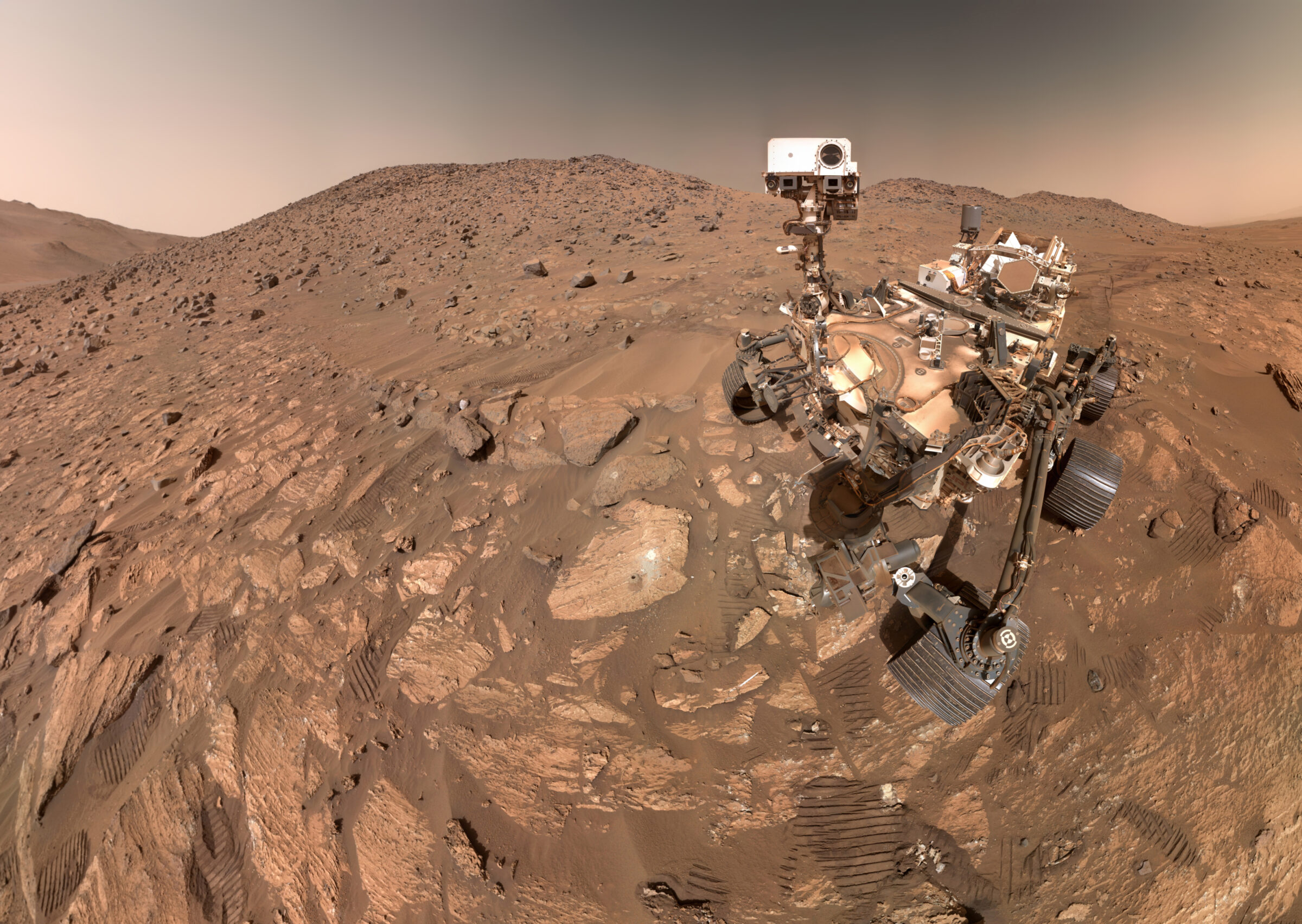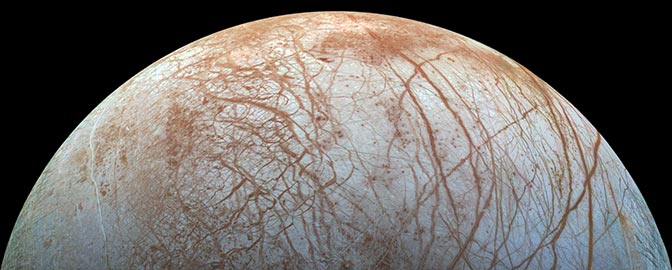Mars Perseverance Rover (Mars 2020)

Mission Overview
The Mars 2020 mission involves landing a large roving vehicle (Perserverance) on the surface of Mars to conduct mobile studies of the surface environment with particular emphasis on habitability, past life, and sample collection for future missions. The primary science objctives of Mars 2020 are to identify past environments capable of supporting microbial life, seeking signs of possible past microbial life, collecting core rock and regolith samples and caching them on the surface for future missions, and testing oxygen production from the martian atmosphere. It will also carry the Mars Ingenuity Helicopter, a small rotorcraft designed to fly in the tenuous martian atmosphere.
Spacecraft and Subsystems
The spacecraft has three primary major components: The cruise stage; the entry, descent, and landing system; and the rover. The cruise stage encloses the rover and landing system for the journey to Mars. and includes an aeroshell (backshell and heat shield) for initial entry into the martian atmosphere. The entry, descent, and landing system comprises a heat shield, parachute, retrorockets, and a sky crane.
The Mars 2020 rover is based on the Mars Science Laboratory Curiosity rover. it has a mass of approximately 1050 kg and measures roughly 3 meters in length, 2.7 meters in width, and 2.2 meters in height. It has six 52.5 cm diameter wheels and a 2.1 m long robotic arm. The top of the rover is the equipment deck.
Communications are via a UHF (~400 MHz), a steerable high-gain (X-band, 7-8 GHZ), and a low-gain (also X-band) antenna. The UHF antenna communicates with the Mars orbiters, the high-gain antenna is primarily for direct Earth transmission and reception, and the low-gain antenna is omnidirectional to receive signals from Earth. Power is provided by a radioisotope thermal generator using 4.8 kg of plutonium dioxide, and stored in two rechargeable lithium dioxide batteries. Mobility is provided by the six wheels in a rocker-bogie suspension, it can withstand a tilt of 45 degrees and can turn 360 degrees in place.
The rover is equipped with a number of scientific investigations, including: the Mastcam-Z camera; the WATSON camera; the MEDA environmental instrument; the RIMFAX radar imager; the PIXL x-ray fluorescence spectrometer; the SHERLOC UV Raman spectrometer; the SuperCam chemical analyzer; and the MOXIE oxygen generation experiment. MOXIE and much of the electronics for the instruments are mounted on or below the rover equipment deck. The RIMFAX antenna is mounted on the bottom rear of the rover. Mastcam-Z, and Supercam are mounted on top of the rover mast. The MEDA wind sensors, three temperature sensors, and radiation and dust sensor are on the mid- to lower mast. Two MEDA temperature sensors are mounted near the front of the rover, and a pressure sensor is on the deck. PIXL, WATSON, and SHERLOC are mounted on the end of the robotic arm.
Mission Profile
Mars 2020 launched on 30 July 2020 at 11:50 UT on an Atlas V-541 from Cape Canaveral Air Force Station. After a 7 month cruise, landing took place on 18 February 2021 at 20:55 UT (3:55 p.m. EST) Earth received time (There is a roughly 11 min., 20 sec. delay at this distance from Mars). Landing was in Jezero Crater on the western edge of the Isidis Planitia impact basin on Mars. The rover has been deployed and has dropped off the Ingenuity helicopter, which made its first flight on 19 April at 07:34 UT. The flight lasted 39.1 seconds and involved hovering at 3 meters altitude for 30 seconds. The rover is planned to operate for at least one martian year (687 Earth days).
Mars Ingenuity Helicopter
The Mars Helicopter (Ingenuity) is an experimental technology test, the primary objective is to demonstrate that autonomous, controlled flight can be achieved in the tenuous martian atmosphere. The helicopter has a mass of roughly 1.8 kg and flies with twin counter-rotating blades which will rotate at almost 3000 rpm. The body of the helicopter has four landing legs. Power is provided by solar panels mounted above the rotors charging lithium-ion batteries. The helicopter has a heating mechanism for night-time survival. Communications will be relayed through the rover. There are no science experiments on board, as this is strictly a proof-of-concept demonstration. The helicopter is mounted on the belly of the rover, encapsulated for protection from dust. The rover dropped the helicopter off and moved to a safe distance to relay commands. The helicopter charged its batteries and conducted preliminary tests. The first flight, on 19 April 2021, lasted 39.1 seconds, hovering at 3 meters altitude for 30 seconds. Over almost 3 years, it made 72 flights and logged more than 2 hours of flight time. During a flight on January 18, 2024, contact was lost just before landing, the helicopter dropped about 1 meter and damaged its rotors so it was no longer capable of flight.
Note: Mission information is from NASA's Space Science Data Coordinated Archive.
Spending Summary
| FY 2024 Total | By Jun of FY 2024 | By Jun of FY 2025 | Change from FY 2024 | |
|---|---|---|---|---|
| Obligations | $84.7M | $71.5M | $77.1M | +$5.7M |
| Outlays | $90.0M | $2.0M | $35.0M | +$33.0M |
Comparing Contract Obligations

Running sum of 2 awards. Shows cumulative actual spending by fiscal period. Period 2 represents combined Oct-Nov data (this is a reporting quirk of USASpending.gov). Negative values indicate adjustments or credits. Data last updated: 2025-09-18
Download OptionsWhat are obligations? Obligations represent NASA's legal commitments to spend money — contracts signed, grants awarded, and purchase orders issued. Unlike outlays (actual payments), obligations show when spending decisions are made.
Reading this chart: The chart displays cumulative obligations throughout the fiscal year (October through September). The solid line shows the current fiscal year's running total, while the dotted line (when available) shows the previous year for comparison. This allows you to see spending patterns and track whether funding is ahead or behind the prior year's pace.
Comparing Contract Outlays

Running sum of 2 awards. Shows cumulative actual spending by fiscal period. Period 2 represents combined Oct-Nov data (this is a reporting quirk of USASpending.gov). Negative values indicate adjustments or credits. Data last updated: 2025-09-18
Download OptionsWhat are outlays? Outlays represent actual cash payments made by NASA. While obligations show when spending decisions are made, outlays show when money actually leaves the treasury.
Reading this chart: The chart displays cumulative outlays throughout the fiscal year (October through September). The solid line shows the current fiscal year's actual spending, while the dotted line (when available) shows the previous year for comparison. This reveals the actual cash flow timing and whether spending is keeping pace with the prior year.


 Explore Worlds
Explore Worlds Find Life
Find Life Defend Earth
Defend Earth

